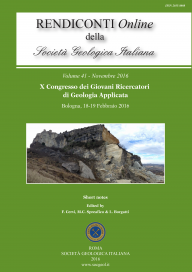
Active and capable fault? The case study of Prata D'Ansidonia (L'Aquila, Central Apennine)
Lorenzo Lo Sardo (a), Emanuela Falcucci (b), Stefano Gori (b), Marco Moro (b), Michele Saroli (a), Fabrizio Galadini (b), Giandomenico Fubelli (c), Michele Lancia (a), Giuseppe Pezzo (b), Francesca D'Ajello Caracciolo (b), Michele Di Filippo (d), Maria Di Nezza (b), Iacopo Nicolosi (b) & Stefano Urbini (b)
(a) Department of Civil and Mechanical Engineering, Università di Cassino e del Lazio Meridionale, V. Di Biasio 43, 03043 Cassino, Italy, E-mail: l.losardo@unicas.it
(b) Istituto Nazionale di Geofisica e Vulcanologia (INGV), Via di Vigna Murata 605, 00143 Roma, Italy
(c) Department of Earth Sciences - Università di Torino, Via Valperga Caluso, 35 - 10125 Torino
(d) Department of Earth Sciences , Sapienza University of Rome, Piazzale Aldo Moro, 5, 00185, Rome, Italy.
Abstract
Keywords
Get Full Text